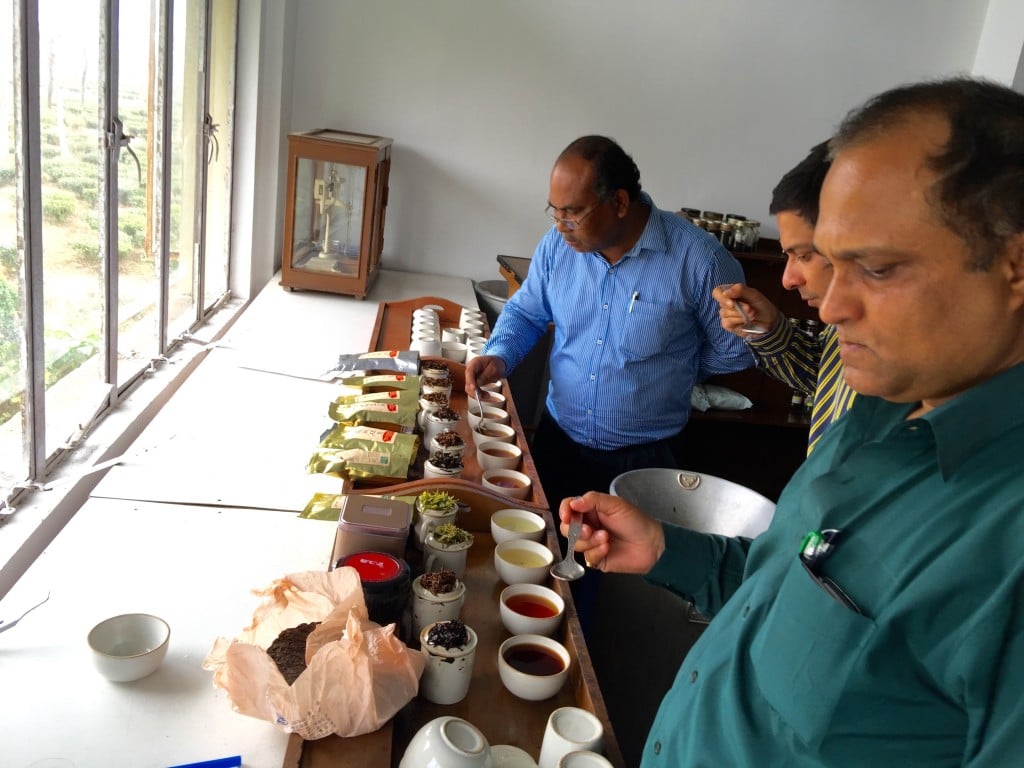Taste as a Standard for Specialty Tea
This post is part of a continuing series of writings by Seven Cups founder, Austin Hodge, for the International Specialty Tea Association. The aim of this series is to detail twelve elements that can be used to authenticate and value specialty tea. The previous post on aroma as an indicator of quality tea can be found here.

Element 12 — Taste
Paradoxically, taste is both the least important and most important element when it comes to establishing the quality of a specialty tea. Taste is the least important element in that taste is, after all, dependent on the individual. What tastes bad to some tastes good to others. Conversely, it is the most important element of tea because it is a place where an experienced taster can ascertain the most information. Critically tasting a tea is an evaluation of that tea’s freshness, cleanliness, quality of production, quality of storage, and more.
In the commodity tea world, the evaluations for color, aroma, taste, and appearance are all done by “tasters.” It’s difficult to separate all of the subjective elements from the process of tasting, because we look at the tea and we smell the tea in the process of tasting.
Professional tasters in the commodity tea arena must taste what is a small spectrum of tea potential for years in order make an educated evaluation of the tea. When we open the spectrum of all of the possibilities that come with tea making, we can see that becoming a professional evaluator of that whole spectrum is virtually impossible. The key element of educating the professional taster’s subjective tools can only come after years of tasting a particular authenticated tea and appreciating the difference within that tea of all of the other elements and how they come together in the mouth.
Currently, there are no professional tasters that can claim an expertise in more than a handful of different teas. Part of the reason for this is the difficulty of authenticating teas that can be used to establish a baseline for a tea taster’s learning. No one who has only tasted an authenticated burgundy one or two times can claim to be able to evaluate a burgundy. A wine sommelier very likely will have gone and tasted the dirt that the grapes were grown in as part of their experience with tasting a wine. Similarly, never tasting an authenticated Da Hong Pao makes it impossible evaluate Da Hong Pao. Drinking 1000 cups of unauthenticated Da Hong Pao leaves you nowhere. Having never tasted the soil inside of Wuyi Mountain and outside of Wuyi Mountain, would also leave holes in the knowledge of one trying to evaluate Da Hong Pao. It is to this situation that standards for authenticating tea are important — recognized standards are the foundation that professional tasting of specialty tea can be built upon.
Most experienced tasters of quality tea will say that tea never tastes the same twice. Just as you can look at a painting for years and still discover something in that painting that you’ve never seen before. There is a scientific explanation for this apparent mystery of tea tasting: the chemistry of the person tasting the tea in a constant state of flux, the tea itself is affected by humidity, barometric pressure, air temperature — the environment that the tea is brewed in is also ever-changing. Tea polyphenols bond strongly and easily to other molecules. Some of this happens inside of the mouth. Tea polyphenols can bond to caffeine molecules and to minerals. That dynamic process is difficult to repeat time after time. This is all to say that once should not expect tasting to ever be perfectly consistent. Accepting this, an experienced tea taster seeks to embed into memory a taste median that they can draw on to judge the taste, and at the same time, discover new nuances that they have never noticed before.
There is no easy way to learn tasting. It can only be learned through experience. The first step is to have access to authenticated teas to build your experience from. This again speaks to importance of being able to judge authenticity by access to standards.
